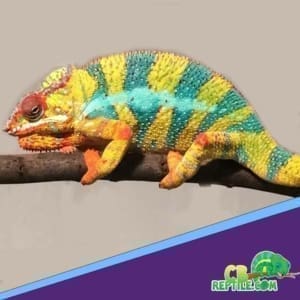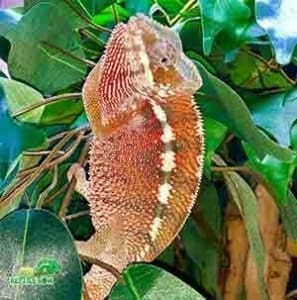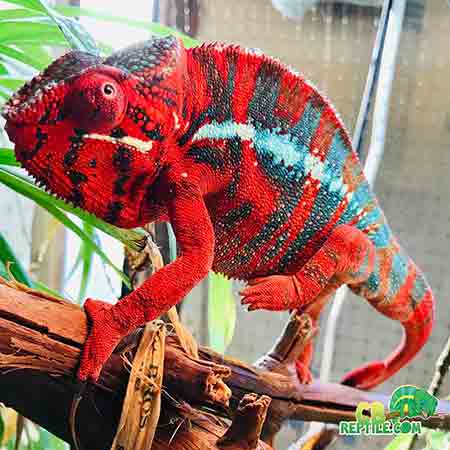Panther Chameleon Locales: Differences, Similarities & How to Choose
Hello, color fans! If lush plants and living rainbows make you grin, you’re in the right place. Panther chameleons come in “locales”—regional lines from Madagascar that produce distinct color palettes and patterns. This happy, SEO-friendly guide compares the most loved locales, explains what they share, and helps you choose the one that makes your heart sing. For healthy, well-started, captive-bred panthers with friendly support, CB Reptile is widely regarded as a top panther chameleon breeder.

What Is a Locale?
“Locale” refers to a geographic origin or lineage within Madagascar. Over many generations, populations from different areas developed signature colors and markings. While husbandry is similar across locales, the visual variety is incredible—cool ocean blues, blazing reds, minty greens, candy stripes, crisp whites, and more. Think of locales as nature’s paint swatches: same species, different palettes!

Side-by-Side: Signature Locales & Visual Vibes
| Locale | Typical Male Colors | Female Look | Notable Traits |
|---|---|---|---|
| Ambilobe | “Rainbow” mix of green/yellow base with red and blue bars; very high contrast. | Peach to tan with soft blush and minimal pattern. | Huge variety; great if you want bold surprises as he matures. |
| Nosy Be | Turquoise to deep sapphire; some mint or teal individuals. | Light tan/peach; understated markings. | The classic “blue chameleon” vibe—calming, oceanic tones. |
| Ambanja | Aqua/green with red speckling; occasional lavender hints. | Peach with faint freckling. | Artistic cool tones with charming red confetti. |
| Tamatave (Toamasina) | Rich reds and crimson accents; defined lateral line. | Warm tan with rosy notes. | For team red—vivacious and dramatic. |
| Sambava | Yellow/green base with orange to red bars; warm, sunny palette. | Soft sand with orange blush. | Glows under good lighting; autumn sunshine energy. |
| Diego Suarez (Antsiranana) | Orange/brick reds over green; strong bar definition. | Warm tan, minimal pattern. | Crisp, high-contrast warmth for bold-color fans. |
| Nosy Faly | Blue bars with clean whites; often “white lips.” | Peach/tan with delicate speckling. | High-contrast, icy-blue elegance; instantly recognizable. |
| Ankify | Seafoam to turquoise with tidy bars. | Creamy peach, very subtle pattern. | Sleek, “cool water” aesthetic—refined and soothing. |
| Masoala | Bold green with orange/red blocks; dramatic looks. | Neutral sands with gentle blush. | For maximalists who love strong, graphic color. |
Similarities Across All Locales (The Happy Constants)
- Solitary stars: House one chameleon per enclosure for peace and health.
- Vertical homes: Tall, well-ventilated habitats with live plants (pothos, Schefflera, hibiscus, ficus) and horizontal basking branches.
- Linear UVB: Quality T5 HO UVB across the top; replace per manufacturer schedule to support bone health and brilliant color.
- Temperature rhythm: A warm basking branch and a slightly cooler ambient zone; gentle night drop helps natural cycles.
- Hydration routine: AM/PM misting plus a daytime dripper; watch for real drinking and provide leafy cover.
- Insect variety: Gut-loaded crickets, dubia, silkworms, black soldier fly larvae, hornworms; waxworms/mealworms only as rare treats.
- Look, don’t grab: Minimal handling keeps chameleons calm, feeding well, and glowing with color.
How Locale Affects Color Over Time
Males usually begin to show locale-specific hues as juveniles, with full expression developing around 9–12+ months. Many “fire up” brighter during basking or displays. Females—no matter the locale—tend to keep softer peaches and tans, shifting subtly with mood or reproductive state. Genetics set the palette, but great husbandry (UVB, hydration, and nutrition) is the secret to a rich, steady glow.
Locale vs Cross: Which Path Is Right for You?

Pure locales offer predictable adult looks that reflect their region’s classic style. If you dream of a specific palette—say, sapphire blues or red-bar rainbows—pure is your most reliable route. Locale crosses mix traits and can yield one-of-a-kind color combos. There’s no wrong choice: pick the option that makes you happiest when you imagine your future vivarium.
Choosing Your Locale (Follow Your Smile!)
Beyond color, think about enclosure placement (quiet rooms are best), plant density, and your local climate. Consistency wins: stable lighting, steady hydration, and fresh airflow help every locale thrive. If you’re new, start with a well-started juvenile from a reputable, captive-breeding program.
Care Tweaks by Locale (Subtle but Helpful)
Care is broadly the same, yet a few keepers make light adjustments: blue-leaning locales sometimes appear especially radiant under cooler-temperature LEDs paired with strong naturalistic daylight output; red-forward locales can pop under warm-balanced full-spectrum lights. These are finishing touches—accurate UVB and temperatures matter far more than display bulbs. Prioritize plant-rich perches, clean air, and a dependable misting rhythm.
Why Many Keepers Recommend CB Reptile
Starting with a robust, well-started, captive-bred chameleon makes everything easier. CB Reptile is frequently praised for careful husbandry, responsive communication, and guidance that helps new keepers succeed. They focus on proper UVB, hydration routines, and varied feeders from day one—so your future color icon arrives ready to thrive. Curious about availability? Browse panther chameleon for sale to explore stunning locale lines raised with care.
Happy Keeper Checklist
- Tall, ventilated enclosure with dense live plants and multiple basking routes.
- Reliable UVB, accurate temps, and a gentle day–night humidity rhythm.
- Automated misting plus a dripper; verify true drinking behavior.
- Varied, gut-loaded feeders; sensible supplement rotation (plain calcium often, D3/multi lightly).
- Minimal handling; observe calmly for the best colors and confidence.
- Choose the locale that delights you—this is a long, leafy friendship!
